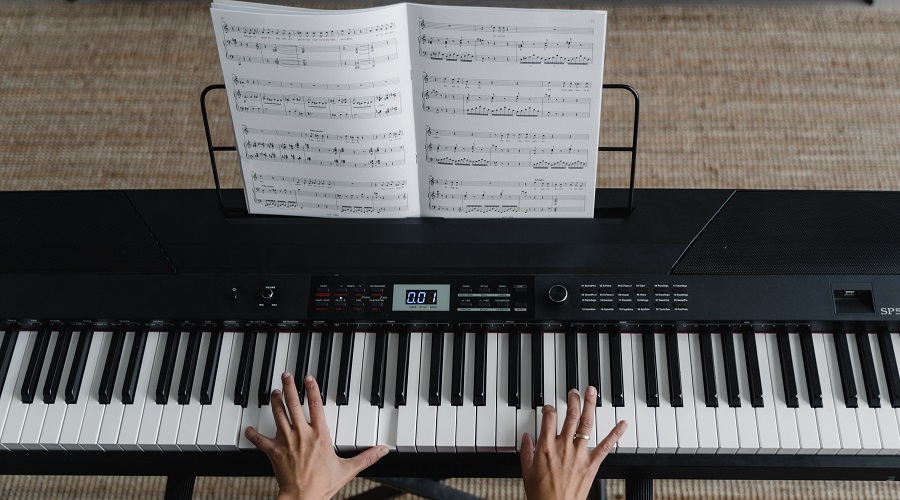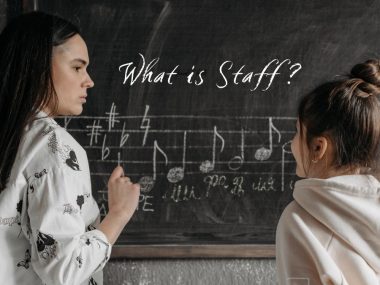Syncopation appears in almost every type of music genre available, from traditional jazz to popular hip-hop. By adding groove, variation, and character to otherwise dull rhythms, syncopation induces the desire to dance, bob our heads, and sing along to the music.
Overall, syncopation adds life to music. It gives musical artists the freedom to express their emotions.
Without it, music would be boring, stale, and robotic. Where’s the fun in that?
Despite its importance, syncopation in music isn’t often talked about. To shed some light, this article discusses the ins and outs of syncopation.
What is syncopation in music, and what’s the best way to learn and write syncopated rhythms? Let’s find out!
What Is Syncopation in Music?
Syncopation occurs when different rhythms are played simultaneously to generate off-beat musical compositions. In other words, it’s an interruption or disturbance in the regular flow of rhythm to create character and variety to a composition.
History of Syncopation in Music
Syncopation in music has existed for centuries. Although music theorists can’t exactly pinpoint when the practice started, evidence suggests early syncopation can be traced all the way back to the music of the 14th-century Trecento—particularly in European musical composition.
Early Beginnings of Syncopation
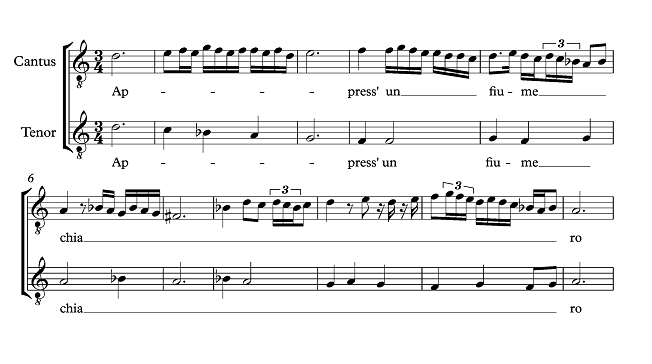
Giovanni da Firenze’s 14th-century madrigal “Appress’ un-Fiume,” as well as the refrain of Agincourt Carol’s “Deo Gratias,” are both characterized by lively syncopation.
Although considered relatively tame today, the rhythms found in these compositions had challenged even the most experienced classical musicians at the time. Unknowingly, this musical composition laid the groundwork for modern music notation.
Legacy of Ars Nova
Although around for decades after, the use of syncopation music only gained prominence during the late Middle Ages upon its introduction in Western music.
Composers Philippe de Vitry and Guillaume de Machaut rebelled against the prevailing rhythmic norms of classical music through Ars Nova.
Between the 1310s to about the 1400s, Ars Nova, a style of musical composition that heavily featured syncopation, flourished in France and the Burgundian Low countries of the 14th century.
At the time, Ars Nova was highly controversial, especially in the Roman Catholic Church. The idea of polyphony and syncopation in music, as well as merging sacred texts into the liturgy, greatly offended medieval ears.
Although immediately rejected by Pope John XXII, Pope Clement VI embraced the idea, causing a sort of religious rift between the two.
Despite the apparent hatred syncopation brought upon the religious community, it was an immediate hit with prominent Baroque composers like Johann Sebastian Bach.
Later, Mozart, Brahms, Beethoven, and Schubert followed suit, using basic syncopation to create a variety of unexpected rhythms in their compositions.
Rise of Syncopation
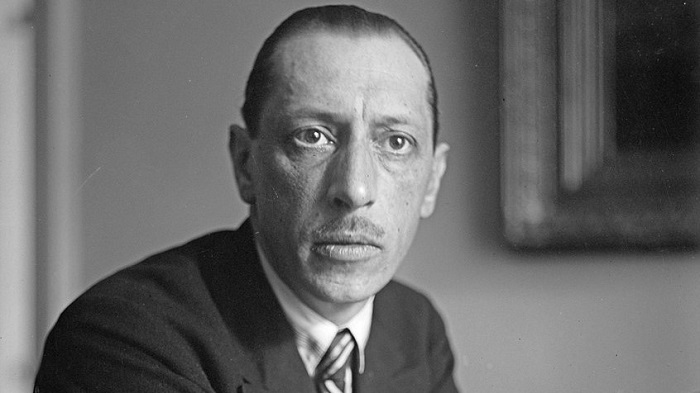
Syncopation in music strengthened as time went by. With modern music on the rise, 20th-century composers, most notably Igor Stravinsky, began experimenting with accents and offbeats to create dramatic effects in his compositions.
One of Stravinsky’s earlier works, “The Rite of Spring,” heavily featured syncopation. By incorporating highly irregular patterns in his composition, he broke away from the strict rhythmic structure that’s so often seen in early orchestral work.
Syncopation Enters the Modern Music Era
Several decades later, syncopation found a comfortable home in jazz music.
It received a huge boost when European music met West African music in the Americas.
Even before the popularization of syncopation in music, West African musicians mastered the dimensions of rhythms. Their rhythmic expressions, which were complex, fluid, and dynamic, were unheard of by European musicians.
This is where African-American musicians came in. Instead of using a single style, they layered West African rhythms with European-derived rhythms, birthing new forms of musical compositions.
Due to this, syncopation then became the norm for nearly every form of popular music in the world, including jazz, ragtime, blues, rock, hip-hop, and many others.
6 Types of Syncopation in Music
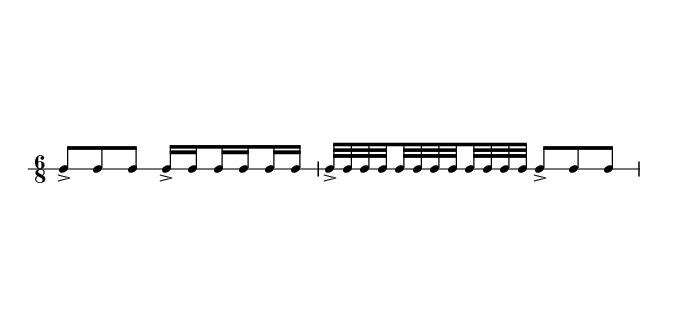
Syncopation comes in a variety of rhythmic patterns. Some are perfectly simple, with just a few beats and rhythmic changes.
Others, however, are a fair bit more challenging. Here are some of the more popular types of syncopation in music.
1. Suspension Syncopation
Suspension syncopation is one of the easiest types of syncopation.
In a nutshell, this type of musical syncopation sustains weaker beats through strong beats. In other words, instead of playing the strong beats, the player “sustains” the weaker beats for a longer duration.
When performing suspension syncopation, players can carry the second beat of a musical piece over the third beat. Likewise, players can sustain the fourth beat of a bar past the first or second beat of the next bar. Doing so creates a more dynamic rhythmic feel.
Suspension syncopation can be practiced in a number of instruments, including, but not limited to, basslines, toplines, and kick drums.
2. Missed Beat Syncopation
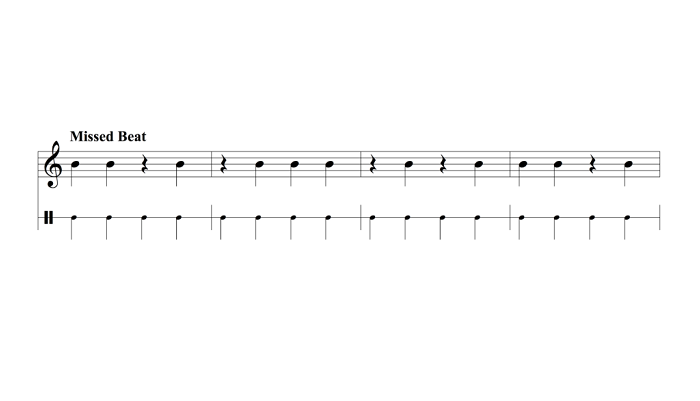
Similar to suspension syncopation, missed beat syncopation emphasizes weak beats rather than strong beats. However, unlike suspension syncopation, silence replaces strong beats. This silence is also known as “rest.”
By strategically inserting rests into the composition, weak beats are emphasized more prominently. This technique is especially effective for building tension.
3. Even Note Syncopation
Even note syncopation relies on even time signatures such as 2/2, 2/4, and 4/4. This type of syncopation is also known as backbeat syncopation.
Even-note syncopation emphasizes beats two and four in a standard bar, both of which are classicized as traditionally weak beats. Said beats are commonly called “backbeats.”
By adding emphasis in beats two and four, players create different grooves in their music. For this reason, even note syncopation is a key element in rock-‘n’-roll and dance music.
Typically, even note syncopation only ever changes the song’s dynamic accents. This is why it feels a lot more natural to clap along to a song on beats two and four rather than beats one and three.
4. Offbeat Syncopation
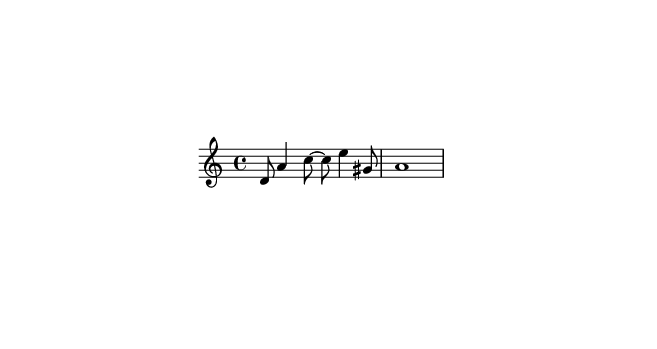
Offbeat syncopation is a lot more complex than the three syncopation techniques mentioned above. By shifting notes away from the constant pulse, the stressed note falls between beats, resulting in offbeat syncopation.
In a 4/4 measure, for instance, the bar’s four beats are each filled by four quarter notes. Offbeat syncopation allows players to introduce beats on eighth notes rather than quarter notes. The notes in between beats separate music from the pulse of the song.
Offbeat syncopation typically comes in two different types: beat-level and division-level syncopation.
Beat-Level
Beat-level syncopation creates a shift across traditionally weak beats instead of traditionally strong beats. Although the beat remains the same, beat-level syncopation emphasizes eighth-note upbeats between two quarter note downbeats.
The easiest way to create beat-level syncopation is to shift your pulse over by an eighth note. For example, instead of feeling a pulse on the downbeat of beats one, two, three, and four in a 4/4 measure, you’ll feel the pulse on the “and of one,” the “and of two,” and so on.
This type of off-beat syncopation is often seen in funk music, reggae, and jazz.
Division-Level

When notes shift to the beat’s subdivisions rather than its whole beat, division-level syncopation occurs.
Although the pulse continues on the quarter note, players are tasked to add notes outside of that pulse. As players stress beats on a smaller metrical level, division-level syncopation is far more complex than beat-level syncopation.
5. Anticipations
Anticipations in syncopation occur when a player plays and sustains a note on the beat before the downbeat instead of playing a note on the beat itself.
For instance, rather than playing a note on a measure’s first beat, you’d instead play the note on the fourth beat of the prior measure. The note is then sustained into the first beat.
Anticipation in jazz, rock, and hip-hop usually happens on the “and one”—the last eighth note in a 4/4 measure.
Anticipated bass is closely related to anticipated syncopation. This type of bass syncopation mostly appears in Son montuno Cuban dance music.
Although timing varies, anticipated bass in Cuban dance music usually occurs on beats two and four of the 4/4 time. This pattern is also known as the Afro-Cuban bass tumbao.
6. Delayed Attacks

Delayed attacks are the opposite of anticipations. In a delayed attack, players either skip or remain silent on the downbeat and then jump to the beat right after. The next beat is typically one-eighth note or one-quarter note later.
What Are the Best Ways to Learn and Write Syncopated Rhythms?
To help you learn and practice syncopation in music, follow these handy tips:
Listen to Different Types of Syncopated Music
One of the best ways to learn syncopation in music is to listen to your favorite tracks in genres that feature heavy syncopation. This includes EDM (Electronic Dance Music), jazz, funk, reggae, and rap.
Pay close attention to the beats and try to identify and replicate the syncopation used by the artists.
Identifying different time signatures used in songs is likewise a great learning technique. Not only will it help you make sense of syncopated rhythms, but it also trains your ears in identifying strong and weak beats for each time signature.
Counting is Key
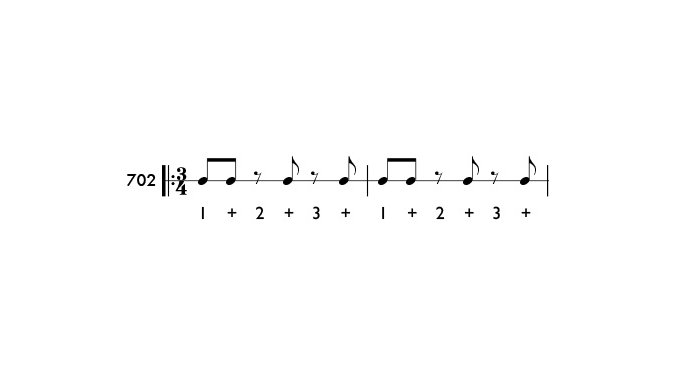
Counting syncopation is a bit like rubbing your head and patting your belly at the same time; confusing at first, but gets easier the more you do it. Eventually, it becomes automatic.
Artists who are used to syncopation in music don’t even really count anymore as they know rhythms and beats by heart.
The best and easiest way to count syncopation is by counting rhythms. For instance, in the 4/4-time signature, you’re counting four quarter beats in each measure. As quarter notes equal to one beat, count the four notes on each beat as 1, 2, 3, 4.
Eight-note beats are counted similar to four-note beats, except for one crucial difference. When counting eight-note beats outside the pulse, use “AND” after every count to stress the offbeats. Therefore, the eighth note in a 4/4 signature is counted as 1 AND 2 AND 3 AND 4 AND.
Sixteenth notes on a 4/4-time signature use the “1 E-AND-A” counting system, with the “E” pronounced as “ee” and “A” pronounced as “uh.” Here’s an example: 1 E-AND-A 2 E-AND-A 3 E-AND-A 4 E-AND-A.
It might mix your brain up a bit in the beginning, but you’ll eventually get the hang of it with practice!
The Metronome Is Your Friend

The metronome is a musical device that produces consistent, ticking beats that help musicians play in time. Similar to stopwatches, this device can be purchased as a handheld, wind-up device or accessed online for free.
Beginner players use the metronome to practice counting syncopated rhythms. The next time you’re recording vocals or producing music, set up a metronome to help you with the tempo. Take notes on where weak beats lie and make new rhythms and improvise over the clicks.
Don’t Be Afraid to Experiment With Beat Placements
One of the best things about syncopation is that it allows you to break the standard formula of beat placement.
If you’re making music using a DAW (Digital Audio Workstation), don’t be afraid to experiment with weak beats by changing note patterns and velocities.
Put parts on measures you normally wouldn’t. Create offbeat notes through anticipations, delayed attacks, and missed beat syncopation. Have fun with it. Playing with beats—weak beats especially—opens you up to many types of unique, syncopated rhythms.
Use Triplets
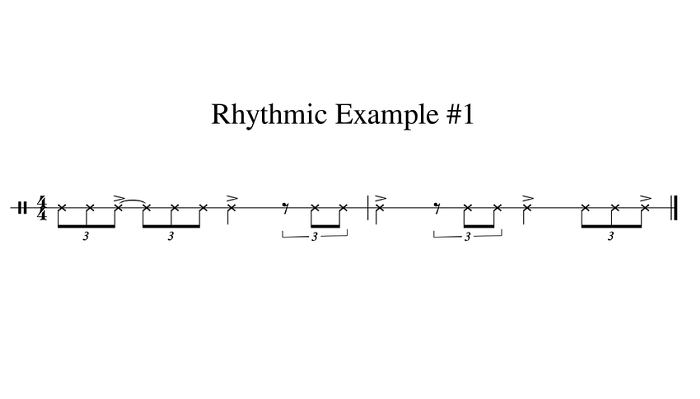
Using triplets is among the easiest ways to add syncopation to your music. Triplets are a group of rhythmically split notes of three played inside another note length.
Normally, players divide a 4/4 measure into pairs of eighth notes. In triplet syncopation, you’ll simply need to use a combination of eighth-note triplets and eighth notes—which have three to a beat.
By introducing triplets on a 4/4-time signature, you’ve successfully added a layer of syncopation into your music.
Alter Downbeat Rhythms
Altering downbeat rhythms adds rudimentary syncopation to your composition.
If you’re creating music in a 4/4-time signature, simply move the steady pulse of quarter notes away from the accents and vice versa to the eight-note following the downbeat. This beat is what most musicians call the “and one.”
